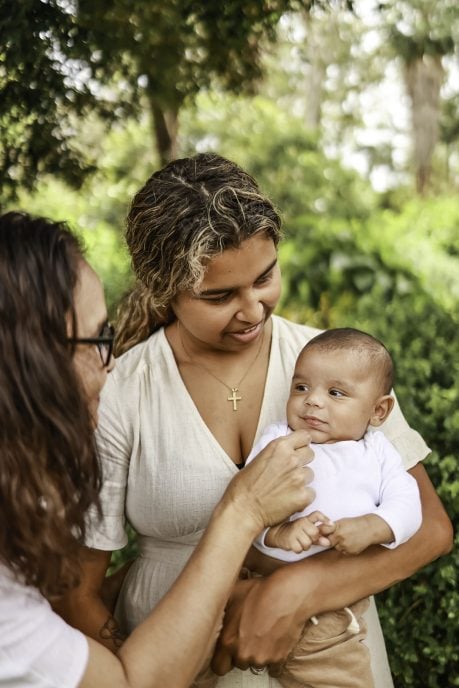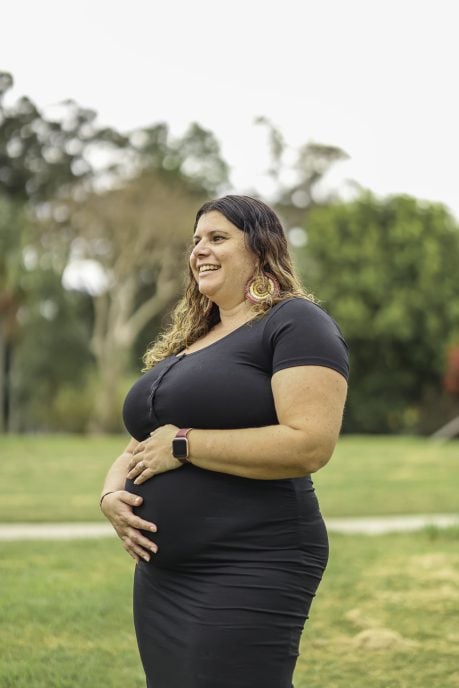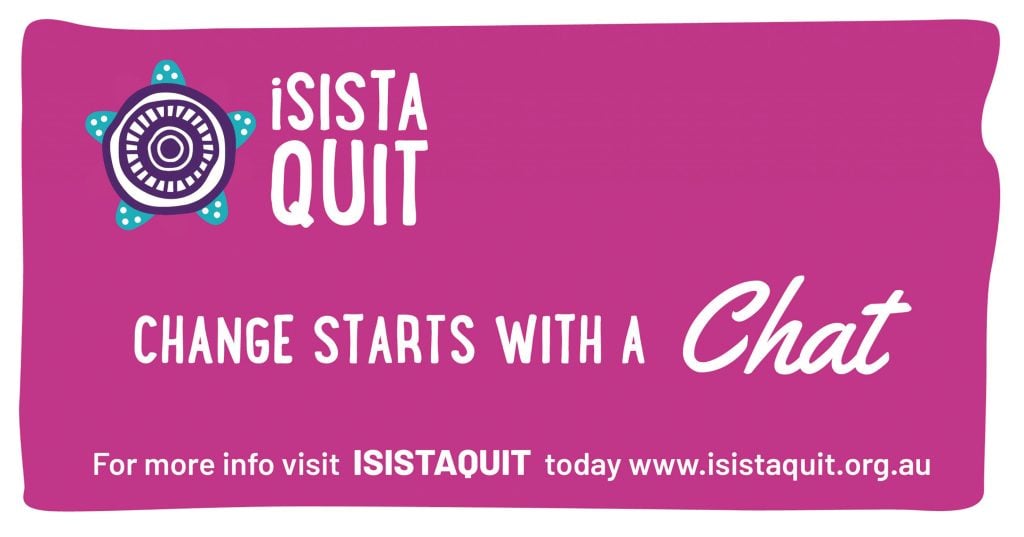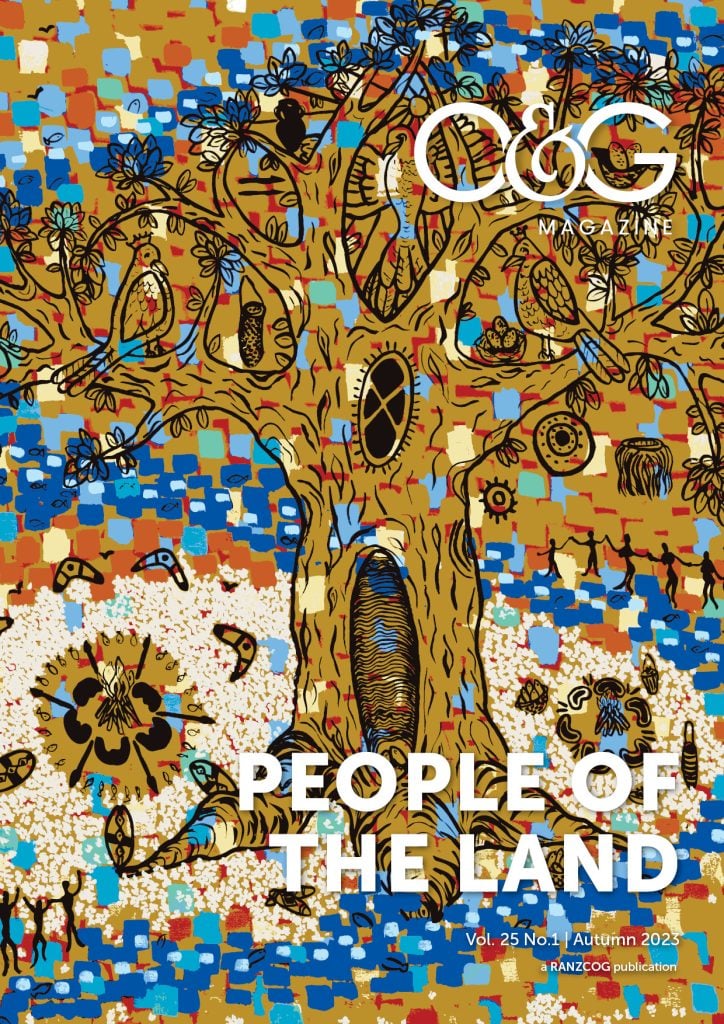These days, how often are obstetricians or GPs likely to come across a pregnant woman who smokes? This largely depends on where you practice and your client base. Socioeconomic status has a marked influence on whether a woman is likely to enter pregnancy still smoking; other factors include ethnicity. Among Aboriginal or Torres Strait Islander pregnant women, 44% are likely to be smoking.1 There are many historical and contemporary antecedents behind this figure. Higher smoking rates are often seen in communities with higher rates of poverty and unemployment. It can be used as a coping mechanism for life stressors such as housing stress, grief and loss, and the effects of intergenerational trauma and racism. Smoking is also a vestige from colonisation when tobacco was used as rations. Because of the higher prevalence of smoking in many communities, tobacco smoking may be normalised. Although smoking prevalence is gradually decreasing, the same is so for the non-Indigenous population, which means the gap remains the same. With the draft National Tobacco Strategy aiming for a 5% prevalence by 2030, we must ensure Aboriginal and Torres Strait Islander women are not left behind.2

Smoking in pregnancy leads to an increase in complications such as placental abruption, stillbirth, small for gestational age and preterm birth. A multivariate analysis of 2015–17 perinatal data indicates that, excluding preterm and multiple births, 47% of low-birthweight babies born to Aboriginal and Torres Strait Islander mothers were attributable to smoking during pregnancy, compared with 12% for non-Indigenous mothers. After adjusting for differences in the age structure of the two populations and other factors, it was estimated that if the smoking rate by Aboriginal and Torres Strait Islander mothers was the same as that of non-Indigenous mothers, the proportion of low-birthweight babies could be reduced by 33%.3
Clinicians will be all too aware of these complications and the importance of smoking cessation in pregnancy. However, how to help women – especially Aboriginal and Torres Strait Islander women – achieve this in an effective, time efficient and meaningful way, is key to reducing the smoking rate. A survey of obstetricians and GP members of RANZCOG and RACGP4 showed that most health providers will “ask”, “assess” and “advise”, but “assist” and “arrange” had poorer compliance. Additionally, clinicians from more professions in a systematic review across 10 countries globally reported very similar findings.5 A qualitative systematic review6 showed health providers found it challenging to provide effective smoking cessation care (SCC) due to lack of training, time, and role confusion. The inability to address psychological stress in women and inadequate use of pharmacotherapy were additional barriers. Miscommunication and inconsistent expectations between health providers and pregnant women were also commonplace.7
“Clinicians reported they were not responsible for addressing smoking cessation with pregnant women.”9
The elements of effective SCC include carbon monoxide assessment with the use of a smokerlyser, behaviour change techniques, and pharmacotherapy with nicotine replacement. iSISTAQUIT10 (implementing Supporting Indigenous Smokers to Assist Quitting) has been developed utilising these elements in a training package that is easy to access for health providers as well as visual resources to support their counselling with pregnant women. In addition, the psychosocial context for smoking is addressed in the training, which is crucial to improving quit rates in Aboriginal and Torres Strait Islander women.

The key ingredient of iSISTAQUIT is clinician training. Research has shown that although almost all clinicians state that smoking in pregnancy is a highly important issue, many are not confident or optimistic that their treatment will be successful.4 Furthermore, many women are motivated to quit when pregnant, but are receiving mixed messages or little support to achieve their aim. iSISTAQUIT aims to address these issues. It includes health provider online training that results in clinicians becoming more knowledgeable, skilled and confident to provide culturally appropriate SCC to pregnant Aboriginal and Torres Strait Islander women. The four-hour training comes as self-paced brief modules to facilitate completion for busy clinicians. It empowers and raises optimism in the clinician to engage in the task themselves rather than only refer on to the Quitline.11 While the Quitline provides an excellent service, and is a great adjunct, less than 2% of smokers utilise it,12 and your patient may not take up your referral. CPD points can be applied for completing the training. The supporting resources include a treatment manual, patient flip chart, posters to display in the service, and My Journey booklets for the women. This booklet is a co-designed (with women and community) resource that can be given to women to map and plan their quit journey. Along with easy-to-understand quitting information, the booklet has distraction methods (such as colouring activities) and built-in augmented reality videos (QR codes that can be scanned to play videos). To further improve efficiency in the consultation process, a decision-aid template has also been developed for medical practice software.
The iSISTAQUIT training is currently being utilised in over 30 sites. Trial sites were also provided with smokerlysers, NRT as well as the visual resources and practice software templates. We have received funding to continue to improve the training and resources, and will incorporate futher information around vaping, an increasingly seen practice. Our vision is to have the training widely available to services and individual clinicians wishing to utilise them. Our philosophy is that all health providers, including obstetricians, GPs, midwives and trainees, involved in caring for pregnant Aboriginal and Torres Strait Islander women have a role to play in helping her quit. It can be an incredibly empowering process for the woman and if you provide good SCC for Aboriginal and Torres Strait Islander women, you will undoubtedly be providing better SCC to all pregnant women who smoke.
iSISTAQUIT launched a social media campaign last year on World No Tobacco Day with Nova Peris and Donella Mills. This included short films developed by mob for mob aimed at both Aboriginal and Torres Strait Islander pregnant women (inspiring them to join the “smoke free sistahood”), as well as clinicians (with the tagline “change starts with a chat” to encourage health providers to engage with Aboriginal pregnant women in a quit conversation).

Our feature articles represent the views of our authors and do not necessarily represent the views of the Royal Australian and New Zealand College of Obstetricians and Gynaecologists (RANZCOG), who publish O&G Magazine. While we make every effort to ensure that the information we share is accurate, we welcome any comments, suggestions or correction of errors in our comments section below, or by emailing the editor at [email protected]. Those pictured have provided consent for their name and image to be included.
References
- Australian Institute of Health and Welfare. Australia’s mothers and babies 2018: in brief. Perinatal statistics series no 36 Cat no PER 108. Canberra: AIHW, 2020.
- Australian Government Department of Health and Aged Care. Consultation Draft National Tobacco Strategy 2022-2030. A Strategy to improve the health of all Australians by reducing the prevalence of tobacco use and its associated health, social, environmental and economic costs, and the inequalities it causes. Canberra: Australian Government Dept. of Health and Aged Care, 2022.
- De Long NE, Barra BG, Hardy DB, Holloway AC. Is it safe to use smoking cessation therapeutics during pregnancy? Expert Opinion on Drug Safety. 2014;13:1721-31.
- Bar-Zeev Y, Bonevski B, Twyman L, et al. Opportunities missed: A Cross-Sectional Survey of the Provision of Smoking Cessation Care to Pregnant Women by Australian General Practitioners and Obstetricians. Nic & Tob Res. 2017;19(5):636-41. doi: 10.1093/ntr/ntw331
- Gould GS, Twyman L, Stevenson L, et al. What components of smoking cessation care during pregnancy are implemented by health providers: a systematic review and meta-analysis. BMJ open. 2019;9(8):e026037. doi: 10.1136/bmjopen-2018-026037
- Kumar R, Stevenson L, Jobling J, et al. Health providers’ and pregnant women’s perspectives about smoking cessation support: a COM-B analysis of a global systematic review of qualitative studies. BMC Pregnancy Childbirth. 2021;21(1):550. doi: 10.1186/s12884-021-03773-x
- Kumar R, Stevenson L, Jobling J, et al. Health providers’ and pregnant women’s perspectives about smoking cessation support: a COM-B analysis of a global systematic review of qualitative studies. BMC Pregnancy Childbirth. 2021;21(1):550. doi: 10.1186/s12884-021-03773-x
- Kumar R, Stevenson L, Jobling J, et al. Health providers’ and pregnant women’s perspectives about smoking cessation support: a COM-B analysis of a global systematic review of qualitative studies. BMC Pregnancy Childbirth. 2021;21(1):550. doi: 10.1186/s12884-021-03773-x
- Kumar R, Stevenson L, Jobling J, et al. Health providers’ and pregnant women’s perspectives about smoking cessation support: a COM-B analysis of a global systematic review of qualitative studies. BMC Pregnancy Childbirth. 2021;21(1):550. doi: 10.1186/s12884-021-03773-x
- Gould GS, Kumar R, Ryan NM, et al. Protocol for iSISTAQUIT: Implementation phase of the supporting indigenous smokers to assist quitting project. PLOS ONE. 2022;17(11):e0274139. doi: 10.1371/journal.pone.0274139
- Gould GS, Bovill M, Pollock L, et al. Feasibility and acceptability of Indigenous Counselling and Nicotine (ICAN) QUIT in Pregnancy multicomponent implementation intervention and study design for Australian Indigenous pregnant women: A pilot cluster randomised step-wedge trial. Addictive behaviors. 2018;90:176-90. doi: 10.1016/j.addbeh.2018.10.036
- Australian Institute of Health and Welfare. National Drug Strategy Household Survey 2019, Summary. Australian Institute of Health and Welfare 2020.







Leave a Reply